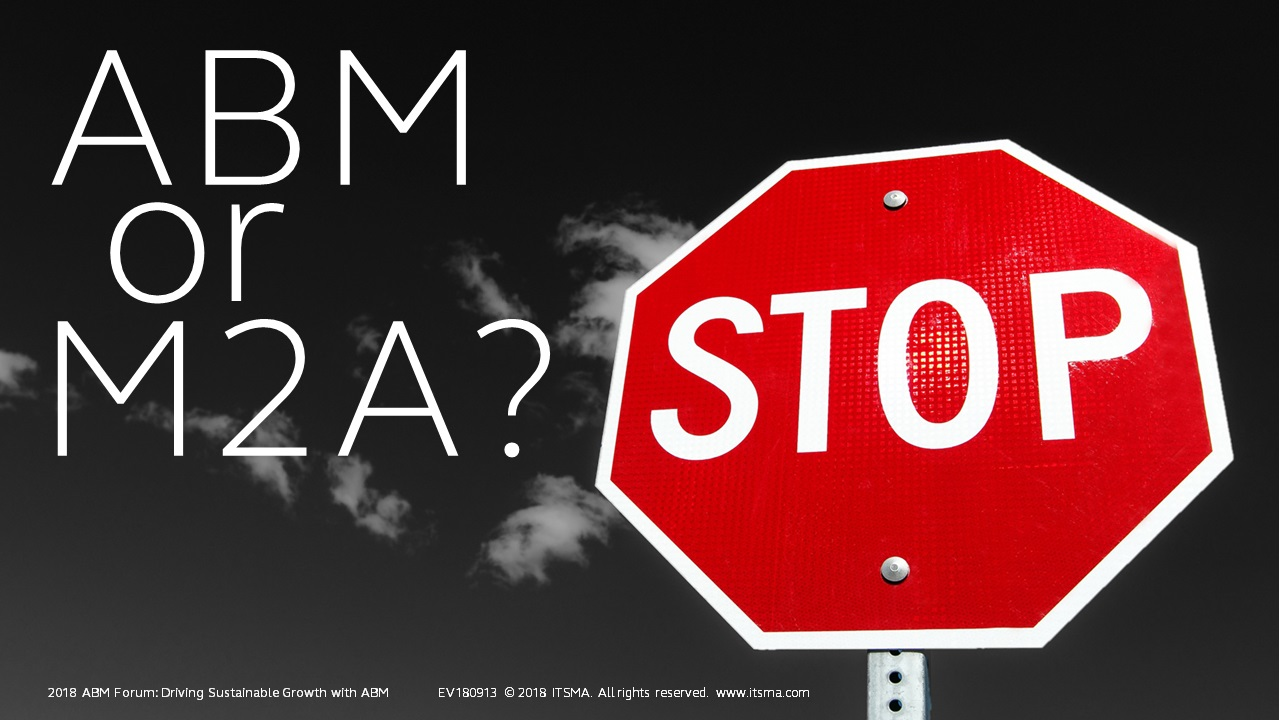In this second part of a two-part report, Joe Stanganelli explains when and why One-to-Many ABM can be an appropriate compromise as ABM-interested organizations with demand scalable solutions that are less resource-intensive.
High income potential for high investment, or high scalability potential for minimal investment? How does today’s ABM-inclined marketer determine which way to go?
Traditional, One-to-One ABM can have mega-high ROI, but it defies scalability. One-to-Few ABM has become a popular compromise, but still requires lots of dedicated resources. At the bottom of the ABM pyramid lies One-to-Many ABM – where ABM’s distinctive personalization can be balanced with mass scalability. As discussed in the first part of this report, One-to-Many ABM is distinguished enough from segment marketing and mass marketing — but when is this level of personalization, light as it may be, worthwhile to do across what could be as many as several hundred accounts?
A mature ABM market
According to Rob Leavitt, Senior Vice President at the Information Technology Services Marketing Association (ITSMA), ABM has matured to the point that enterprise organizations are clamoring for it in at least some way, shape, or form. In some cases, they are blending multiple strategies, resulting in both the development of ABM hybrids, and a renaissance of sorts for the increasingly popular ABM Lite, or “One-to-Few ABM” – a “lighter” form of ABM that applies ABM strategies to very small clusters of very similar accounts instead of to a single account. ITSMA has reported that the average annual direct program spend required to maintain a single One-to-Few ABM cluster with an average size of 20 accounts is $20,000 – the same cost of applying standard, full-on ABM (a.k.a. One-to-One ABM, or Strategic ABM) to a single account.
One-to-Many ABM groups, on the other hand, which tend to average about 100 accounts per, have a median direct-program cost of merely $25,000. Granted, it’s not nearly as customized as the traditional One-to-One or a blended One-to-Few approach, but that cost savings is especially attractive to (1) organizations with lower CAPEX and OPEX to throw around and (2) companies that don’t have the kinds of multi-year deals that larger ABM-using enterprises have with their customers.
The ABM matrix
In their 2017 book, A Practitioner’s Guide to Account-Based Marketing, Bev Burgess and Dave Munn illustrated a “directional matrix” to help readers understand when each specific type of ABM strategy – or even a particular non-ABM strategy — would be appropriate by account characteristics. On this point, the pair averred that any account that is highly attractive, but low in relative business strength,* or vice versa, is precisely the kind of account (for varying reasons) that works well for a One-to-Many ABM approach. Ditto, Burgess and Munn elaborated, for accounts that are simultaneously moderately attractive and moderately strong.
Their reasoning is that these types of accounts are not likely to offer enough ROI for a One-to-Few ABM approach (let alone a straight-out One-to-One ABM strategy), but still rank highly enough in key characteristics such that they demand a heavier, more personalized investment than non-ABM approaches – such as segment marketing or mass marketing – could feasibly deliver.
Meanwhile, Burgess and Munn wrote, any accounts with a greater combination of strength and attractiveness merit greater investment via traditional One-to-One ABM (or, in some cases, possibly even One-to-Few cluster marketing). Conversely, they state, any accounts with a weaker strength-cum-attractiveness combination are best relegated to mass marketing (or, possibly, segment marketing).
Penetrating new markets, snatching new accounts
Because One-to-Many ABM involves, by definition, ABM scaled across many accounts, multiple ITSMA executives have noted that the real ROI of One-to-Many ABM isn’t so much in immediate direct income from the applicable accounts, but from “gaining logos” and getting your brand’s name “out there” across a particular industry sub-segment.
“If you are trying to really up your demand generation among a named set of new accounts, one-to-many is a strong approach,” said Lisa Dennis, President of Knowledgence Associates and a senior associate at ITSMA.
Indeed, according to the July 2018 ITSMA and ABM Leadership Alliance Account-Based Marketing Benchmarking Survey, One-to-Many ABM has become the most popular method of applying ABM to develop new accounts (although One-to-Few ABM is not far off). Unsurprisingly, the same survey found that standard One-to-One ABM is the least popular ABM methodology for new-account development – almost certainly because of the major time and resource investment that it takes for what is far from a sure thing.
Meanwhile, those organizations that did lean on One-to-Many ABM stylings for new-account development have discovered along the way that One-to-Many ABM operates just as well for existing accounts – providing more-affordable scalability. “Companies that were mostly focused on using ABM to go out and target new logos are beginning to apply ABM principles to existing accounts as well,” said Leavitt. “All of that, I think, is a maturation of the discipline.”
* In this context, according to Burgess and Munn, account “strength” refers to the strength of relationships and other commonalities that the business shares with the account, while account “attractiveness” refers to the amount of money at stake weighed against the logistical pain points in the account’s decision-making processes.







